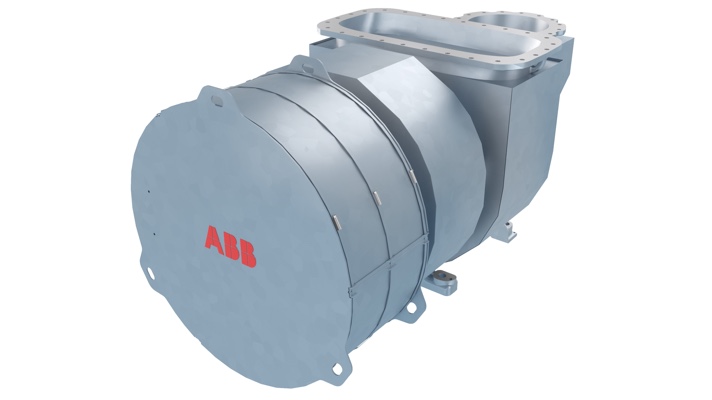ABB Turbocharging has optimised its turbochargers to suit small- and medium-bore two-stroke diesel and gas engines. The turbochargers operate on all fuels and their compact design allows installation in smaller engine rooms while still delivering the high-power density expected from larger turbochargers.
Scaled down from the A100-L and A200-L designs, the new A255-L and A260-L turbocharger models offer a smaller size while retaining key design features incorporating the latest rotor component technologies. The new turbochargers deliver high efficiency and lower fuel consumption, reduced emissions and lower maintenance costs.
Focus on Turbocharger Efficiency
Alexandros Karamitsos, head of global sales for Product Line Low-speed Turbocharger at ABB commented: 'We believe further focus will be placed on turbocharger efficiency in the future, alongside higher compressor pressure ratio demands, to enable two-stroke engines to reach their full potential. Our A255-L and A260-L turbochargers will support this demand, delivering the highest levels of turbocharger efficiency and power density while enabling small-bore two-stroke engines to achieve lower fuel consumption, and complying with latest emissions regulations.'
All Fuels and IMO Tier II and III
Karamitsos continues: 'The A255-L and A260-L turbochargers are designed to operate on all fuel types and on engines specified for both IMO Tier II or Tier III emissions levels. Similar to other turbocharger products in our A200 series, a full range of matching components will be available to ensure an optimised on-engine specification.'
Optimised Combustion in Dual-fuel Engines
The A255-L and A260-L turbochargers can be used on low pressure dual-fuel engines to optimise combustion, which improves engine efficiency and reduces emissions. Their high turbocharging efficiency ensures that a high air-fuel ratio is maintained in high-load operation, thus reducing the tendency for fast combustion, which can adversely affect operation and emissions. The turbochargers also facilitate the utilisation of emission abatement technologies for NOx and SOx reduction.
Reduced EEDI
Due to the efficiencies achieved, the A255-L and A260-L turbochargers can reduce the energy efficiency design index (EEDI) of smaller cargo vessels in the size range of 10,000- 40,000 dwt that make use of small and medium bore two-stroke engines. These will typically represent vessels such as bulk carriers, tankers, container feeders and car carriers.
Picture: The new A255-L turbocharger has been optimised for small- and medium-bore two-stroke diesel and gas engines (by ABB).








